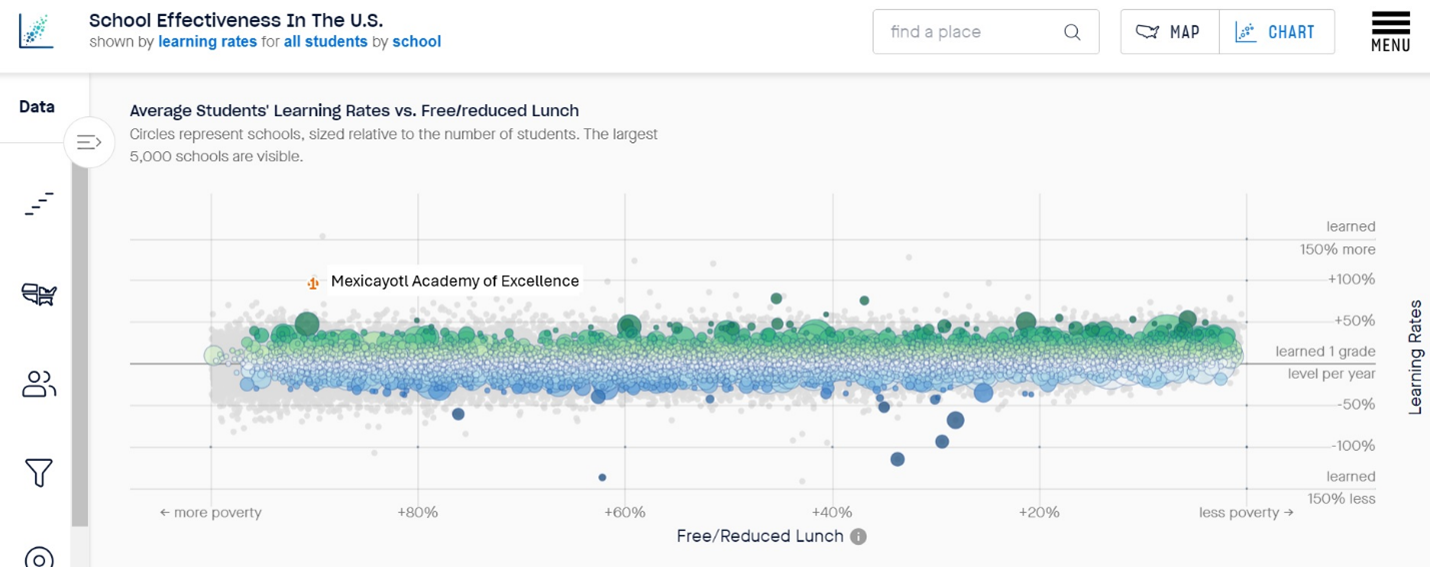Mexicayotl Academy of Excellence, a charter school in Nogales Arizona, demonstrated the highest level of average academic growth among Arizona schools in the latest version of the Stanford Educational Opportunity Project data (see national data below). Clocking in at an impressive 95.6% faster than the national average, Mexicayotl is famous for academics, native dance performances and fun. It is not just the fortunate students in Nogales who can learn from Mexicayotl- the school has much to teach the rest of us as well.

Former Arizona Superintendent of Public Instruction Lisa Graham Keegan wrote about Mexicayotl and other schools like it for the Fordham Institute. LGK cautioned against technocratic overconfidence- especially in the form of five-year default closure provisions-because it turned out in Arizona that some fantastic authentically community schools might have been closed by such folly:
Moreover, Arizona’s “wild” charter journey led to many low-income, highly performing charter management organizations that can only be found in the Grand Canyon State. Many are community-focused and community-developed, which we all say that we want, but their first priority was on stabilizing the communities they grew from. In other words, they weren’t very good academically to start—but they did transform their neighborhoods, and parents trusted these new schools with their precious children over many other options that went out of business due to lack of enrollment.
Years later, many of them, like Academies of Math and Science, Mexicayotl Academy, and Espiritu Schools, are now among the top performing schools in not just the state, but in the country, and were highlighted in last week’s Education Equality Index. The thing is, it took a decade to do that. And we Arizonans let it happen.
A few things for overconfident technocrats to consider: how many Mexicayotl Academies have been closed around the country by five-year default closure provisions in charter laws? What if authentic, community-based schools need a bit more runway than parachuting in a group of TFA kids to whip up math scores with a cat-o-nine tails? What if our methods for judging school quality are still primitive?
Mexicayotl’s parents in the early years, surveying their other options, decided to place their confidence in the school’s staff. Luckily, Arizona’s charter law did not have a default closure provision and also granted 15-year charters. Arizona’s method of accountability (lots of options) is brutally efficient compared to the top-down method, but Mexicayotl survived it.
Indiana recently followed suit in lengthening their charters to 15 years. This will take a considerable administrative burden off the schools rather than having them continually working on renewal. Fortunately, Indiana is also equipped with other options for families with the broadly available voucher law.
Who will be next?


